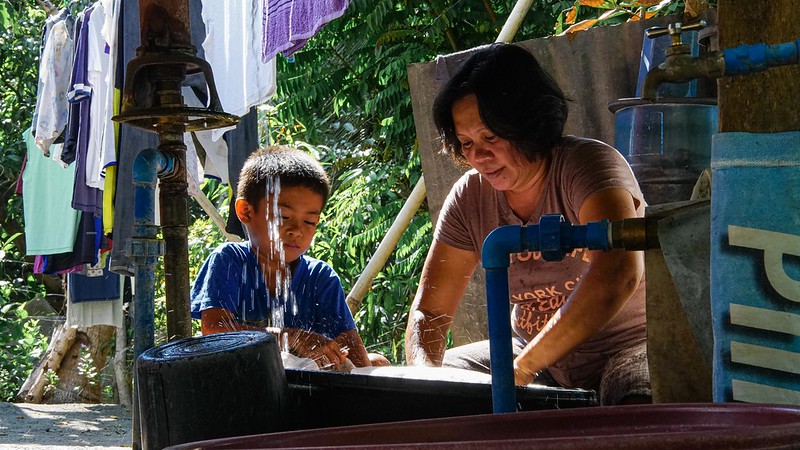
As the pandemic’s effects continue to unfold, an even starker picture of the links between public health and the economy begins to emerge. And around the world, women—who already bear disproportionate burdens that keep them from full economic participation—face gendered differences perpetuated by the coronavirus pandemic.
“The coronavirus pandemic has meant keeping another ball in the air for women juggling work, family and more,” writes Caitlin Mullen, contributor The Business Journals’s ‘Biz-women’—as many now have to work “more paid hours than ever while handling the bulk of household and family duties.”
A women’s most economically productive age overlaps with prime reproductive years—meaning women’s ability to control reproduction is one of the most important health factors impacting personal economic freedom and trajectory.
The International Center for Research on Women (ICRW) recognizes this link and has published a 2020 brief that focusing on the interconnectedness and importance of health—especially sexual and reproductive health (SRHR)—and women’s economic empowerment.
Similar to ICRW’s 2018 brief, the 2020 brief takes a look at the connections between SRHR and women’s economic empowerment, touching on:
- why health is a key component of the enabling environment for women’s economic empowerment,
- how the impacts of COVID-19 around the world further highlights this relationship, and
- the need for both issues to be addressed in tandem.
ICRW notes that globally, there is a 43 percent gap in labor force participation between men and women—but more equal participation could lead to large gains. According to the World Bank, if women and men worked at equal rates in the workforce for equal pay and equal hours, there could be a global gain of $160 trillion.
Instead, countries lose 14 percent of their wealth as a result of gender inequality. The World Bank also highlights how national economies suffer when women and girls are discouraged from pursuing education and fully participating within the workforce:
In many countries, girls’ average educational attainment remains lower than boys and adult women are less literate than men.
Apart from these gender gaps in educational attainment, discrimination and social norms shape the terms of female labor force participation. Women are less likely than men to join the labor force and to work for pay. When they do, they are more likely to work part-time, in the informal sector, or in occupations that have lower pay.
These disadvantages translate into substantial gender gaps in earnings, which in turn decrease women’s bargaining power and voice.
ICRW’s brief also recognizes one way in which women’s labor force participation is constrained is through unmet need for contraception—an issue that 214 million women in low resource countries experience. This unmet need results in 84 percent of unintended pregnancies. With each pregnancy, many women must interrupt paid work to care for their children—a challenge men do not typically face since women spend two more hours of unpaid work per day than men.
Studies show women who are able to consistently use contraceptives between pregnancies are more likely to participate in the formal labor force and to receive cash payments for that work. Women who access contraceptives also have more control over deciding when to re-enter the workforce after giving birth.
Access to contraceptives enables girls and women to stay in school or skill training programs longer—linked to increased labor force participation and greater lifetime earnings.
Conversely, women’s ability to choose where and when they work, and under what conditions, is intimately linked to reproductive empowerment and the choice about the timing, spacing and number of births. When women contribute a majority of the household income, they have substantially higher decision-making power around household expenditures, particularly food, shelter and health spending.
Addressing the Link Between Sexual/Reproductive Health and Economic Empowerment
Following an exploration of the vast, gendered inequalities that continue to fuel health and economic disparities, ICRW has compiled a list of recommendations for U.S. foreign policy to address the link between SRHR and economic empowerment:
- Immediately incorporate women’s health as a critical component of the Women’s Global Development and Prosperity Initiative (W-GDP) Pillar 3 efforts to address the enabling environment for women’s economic empowerment, both in the executive initiative and introduced bills.
- Ensure funding for both the long-term and short-term impacts to reproductive health and women’s economic empowerment in the next iterations of COVID-19 supplemental funding, including providing exemptions on restrictions for U.S. assistance to support key partners in addressing key health issues.
- End the Protecting Life in Global Health Assistance Policy, which is at odds with overwhelming evidence on the importance of women’s full access to reproductive healthcare and their ability to thrive as economic actors.
With women and girls stepping up like never before to aid an infected world, our leaders owe them the respect of not only acknowledging gendered-economic disparities, but implementing policies and change that focus on improving their health and wellbeing instead of capitalizing off of their care.





